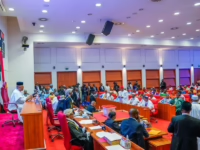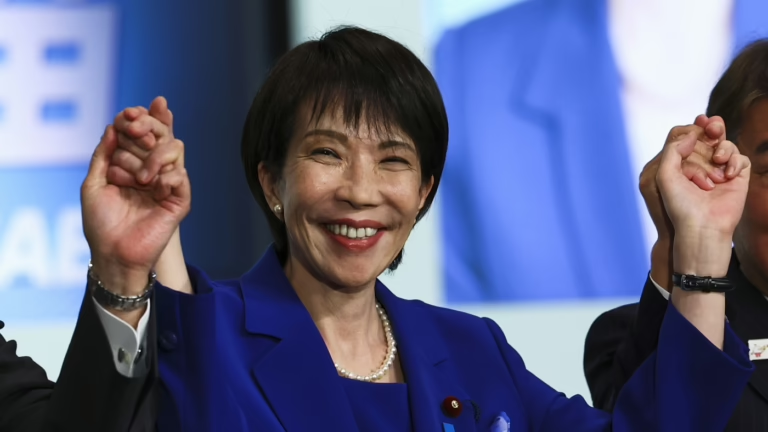Sanae Takaichi, Japan’s newly appointed prime minister, has been active in politics since 1993 and held significant roles during the late Shinzo Abe’s tenure.
Kim Kyung-Hoon/Pool/Getty Images
Sanae Takaichi has made history as Japan’s first female prime minister. Known for her staunchly conservative stance and traditional views on gender roles, she also surprises many with her passion for heavy metal music.
Her election by Japan’s parliament on Tuesday followed her recent selection as leader of the Liberal Democratic Party (LDP), a dominant force in Japanese politics for nearly 70 years. The party’s recent shift toward the right was underscored by its alliance with a right-wing populist faction, necessary after losing a long-standing coalition partner earlier this month.
At 64, Takaichi is regarded as one of the most right-leaning figures within the already conservative LDP, according to Jeffrey Hall, a lecturer at Kanda University of International Studies.
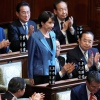
Takaichi has championed stricter immigration policies and adopted a firm stance on China. She has often been likened to the late British Prime Minister Margaret Thatcher, whom she admires deeply and honors by frequently wearing blue suits reminiscent of Thatcher’s style.
Beyond politics, Takaichi’s personality reveals a different side: she played drums in a college band, counts Deep Purple and Iron Maiden among her favorite artists, once performed a rock anthem on national television, and maintains a keen interest in motorcycles and automobiles.
“These facets of her persona show that she’s not just the formidable ‘Iron Lady’ figure but also someone who enjoys life,” Hall remarks.
Here’s a closer look at the key aspects of Japan’s new prime minister.
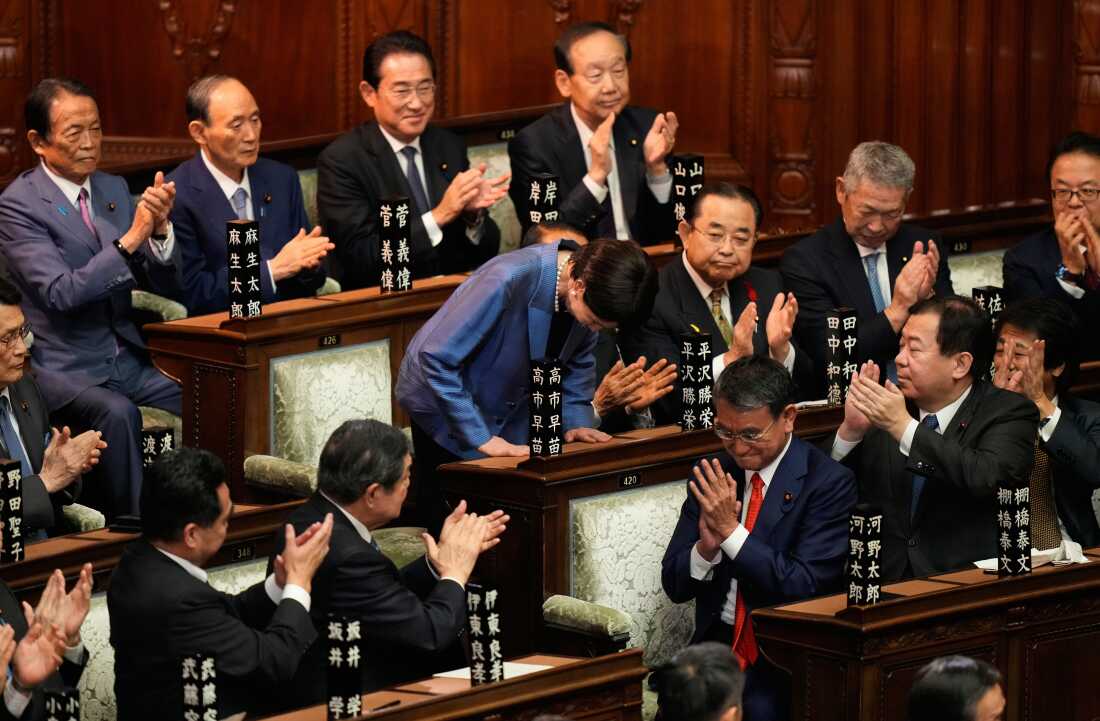
Sanae Takaichi bows in gratitude after her election as Japan’s prime minister during a parliamentary session in Tokyo.
Eugene Hoshiko/AP
1. A Non-Political Family Background
Raised in Nara, a central prefecture in Japan, Takaichi’s upbringing was far from the political dynasties common in her party. Her father was employed by an automobile company, while her mother worked in local law enforcement.
“Unlike many LDP politicians who come from established political families, she grew up in modest circumstances,” Hall explains. “She was academically driven and succeeded in passing entrance exams for some of Japan’s most prestigious private universities.”
However, her parents preferred she attend a two-year college nearby to reduce expenses rather than an elite university far away. Ultimately, she enrolled at Kobe University, a respected national institution, funding her education through part-time work and enduring a demanding six-hour daily commute from home.
In 1987, Takaichi spent time in the United States as a congressional fellow in the office of Representative Pat Schroeder, a Democrat from Colorado, despite her conservative views. Upon returning to Japan, she leveraged her international experience to become a television presenter, a common stepping stone into politics in Japan.
“Fame on TV often translates into electoral success here,” Hall notes.
2. A Longstanding Political Career
Takaichi entered the political arena in 1993 as an independent representing Nara. She joined the LDP three years later and held several influential government roles, including minister of economic security.
She notably served as minister of internal affairs and communications under Prime Minister Shinzo Abe from 2014 to 2017 and again from 2019 to 2020, overseeing telecommunications and media regulation.
 longest-serving prime minister, who was assassinated at 67.” loading=”lazy” />
longest-serving prime minister, who was assassinated at 67.” loading=”lazy” />
Hall points out that Takaichi’s tenure in this role was longer than any other politician’s, reflecting Abe’s trust in her abilities during his extended administration.
Shinzo Abe, Japan’s longest-serving prime minister, led the country from 2006 to 2007 and again from 2012 until 2020, before his assassination in 2022. He was renowned for his economic revitalization strategy, dubbed “Abenomics,” and efforts to enhance Japan’s global influence.
Takaichi positions herself as the heir to Abe’s conservative vision, having secured his endorsement during the LDP leadership race in 2021.
“While their personal relationship may not have been close, they shared similar ideological views, especially regarding China and a revisionist perspective on World War II,” Hall adds.
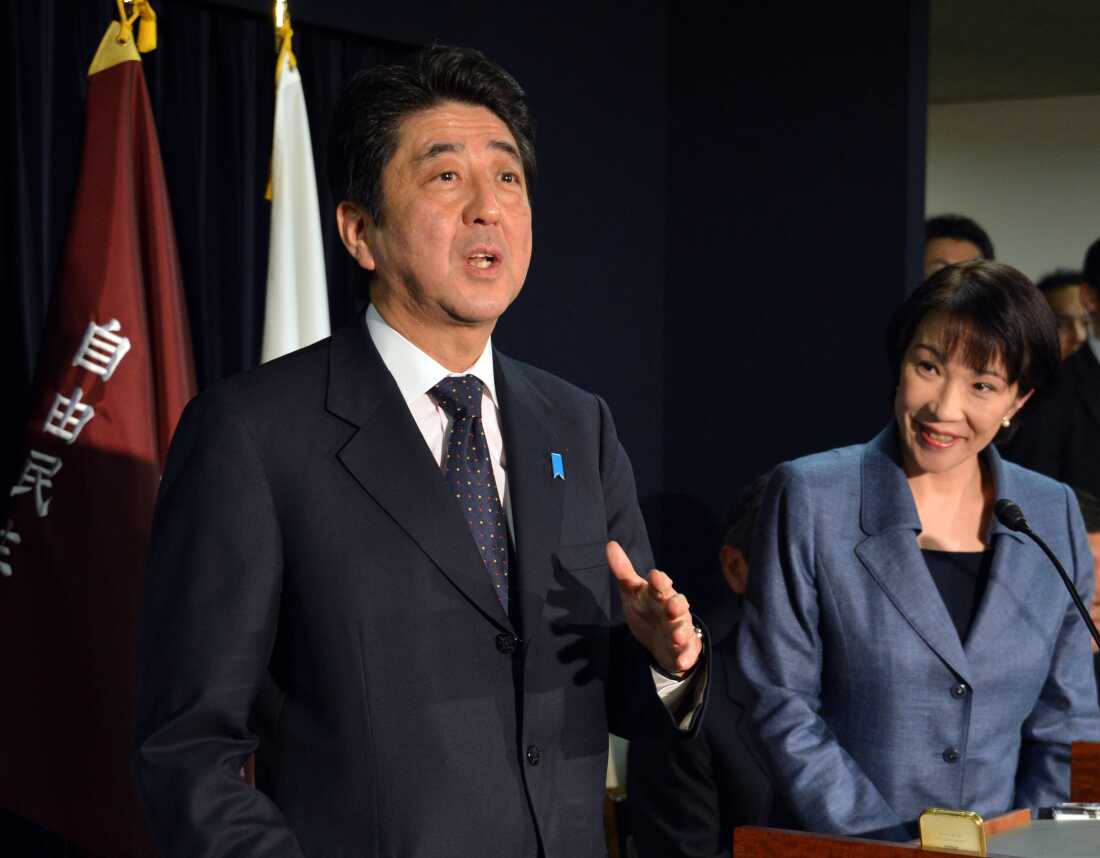
Takaichi observes as Shinzo Abe speaks to reporters in Tokyo in 2012.
Yoshikazu Tsuno/AFP via Getty Images
3. Controversial Political Positions
Takaichi endorses modern monetary theory, which supports deficit spending on critical sectors like defense, diverging from the traditional fiscal conservatism of many in her party.
However, her social policies are markedly conservative. She promotes initiatives encouraging childbirth and opposes women retaining their maiden names after marriage, despite using her own maiden name professionally.
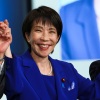
Her stance on Japan’s World War II history has sparked debate. Over the years, she has minimized Japan’s wartime aggression and criticized the Allied war crimes tribunals. Takaichi frequently visits the contentious Yasukuni Shrine, where convicted war criminals are honored, though she notably refrained from attending the recent autumn festival, opting to send a ritual offering instead.
Her views on immigration and tourism have also drawn criticism. During her campaign, she referenced unverified claims of tourists mistreating sacred deer in Nara Park, fueling accusations of xenophobia.
“This reflects a broader skepticism toward foreigners and immigrants residing in Japan,” Hall explains.
Takaichi has pushed for an anti-espionage law, suggesting that Chinese residents might act as spies for Beijing. She also advocates restricting property purchases by non-Japanese and tightening controls on illegal immigration.
“Those opposed to immigration are optimistic about her leadership, though business interests reliant on foreign labor may temper such policies,” Hall notes.
4. A Complex Relationship with Feminism
As Japan’s first female prime minister, Takaichi’s rise is historic in a nation where women held just about 10% of parliamentary seats as of 2024.
Japan ranks 118th out of 148 countries in gender equality, the lowest among G7 nations, according to the World Economic Forum’s 2025 Global Gender Gap Report.
Despite her groundbreaking position, Takaichi is unlikely to champion gender equality aggressively. She supports traditional gender roles, opposes same-sex marriage, and favors male-only succession to the imperial throne.
“This period probably won’t see major advances in women’s rights or gender issues,” Hall says. “Still, having a female leader may inspire young women to envision themselves in such roles someday.”
Takaichi has addressed women’s health, advocating for expanded hospital services and openly discussing her own menopause challenges.
She has shared her personal struggles with fertility; though she has no biological children, she is a stepmother to three and grandmother to four through her husband’s previous marriage. Her spouse, Taku Yamamoto, a former parliamentarian and fellow LDP member, took her surname-a rare practice in Japan.
During her campaign, she pledged to raise female cabinet representation to levels seen in Nordic countries, around 50%. However, shortly after assuming office, she appointed only two women to her cabinet.
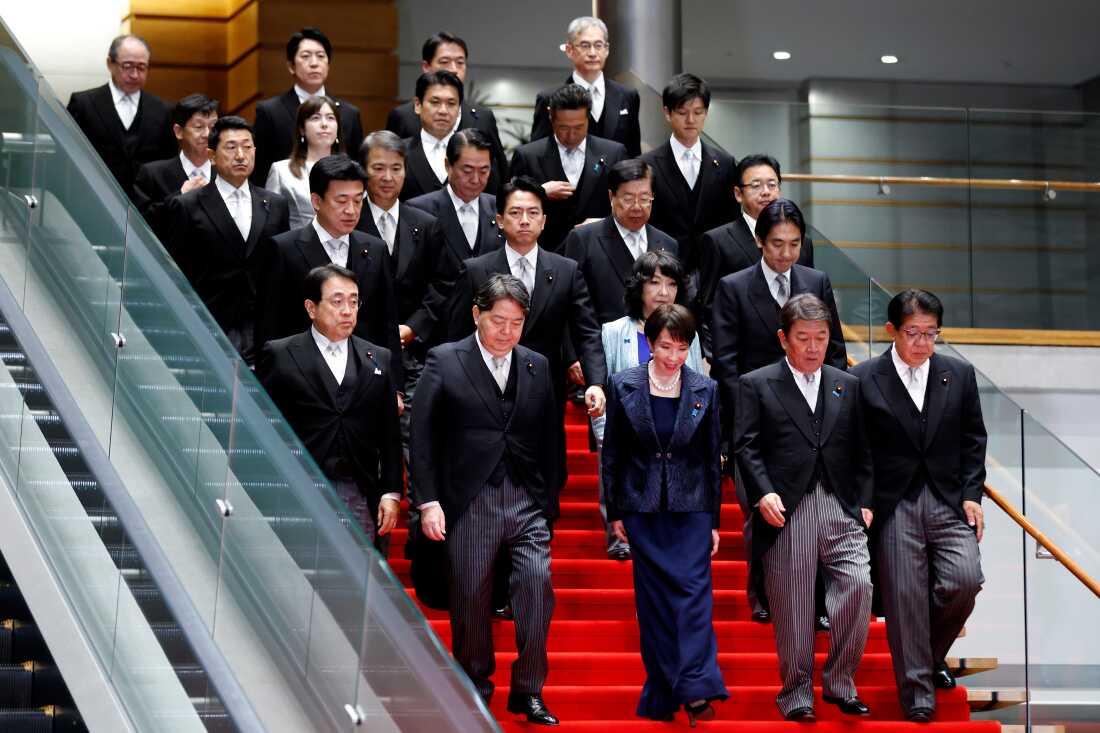
Prime Minister Sanae Takaichi poses with her cabinet in Tokyo, appointing two female ministers despite earlier promises to increase women’s representation.
Kiyoshi Ota/Pool Bloomberg
Hall suggests that Takaichi has had to adopt a more conservative posture than her male counterparts to ascend within a male-dominated party. While her fiscal policies differ from Thatcher’s, both leaders share a hawkish, resolute image and a desire to avoid appearing weak.
“Her rise seems modeled on Thatcher’s example: a strong, unwavering figure navigating a conservative male environment that rarely elevates women to top roles,” Hall concludes.
5. A Cordial Stance Toward Trump
Takaichi has expressed a warm rapport with former U.S. President Donald Trump, who recently praised her as “a highly respected person of great wisdom and strength” in a congratulatory social media message following her party leadership victory.
She reciprocated with a bilingual post expressing her hope to collaborate with Trump to strengthen the U.S.-Japan alliance and promote a Free and Open Indo-Pacific region.

Hall believes Trump’s favorable impression stems from Takaichi’s reputation as a hardline conservative opposed to immigration and a loyal admirer of his late friend Shinzo Abe.
Abe was among the first foreign leaders to build a close relationship with Trump during his initial term, bonding over shared interests like wagyu beef burgers, sumo wrestling, and golf.
Trump is anticipated to meet Takaichi during an upcoming visit to Japan. Hall expects her to follow the diplomatic approach of previous prime ministers:
“She will likely show utmost respect, avoid public disagreements, and when differences arise, address them discreetly to maintain a positive rapport with the president,” he says.














